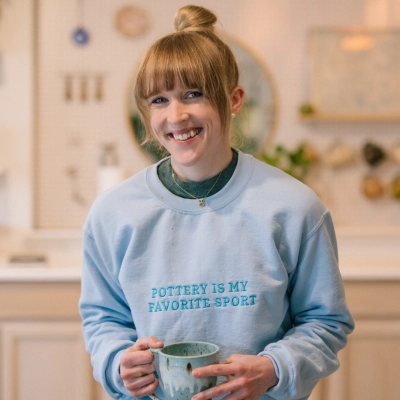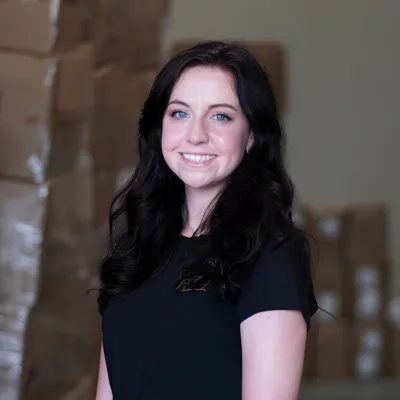Building a strong brand identity is a crucial element of business success in today’s competitive market. We asked industry experts to share one thing they did to build a strong brand identity for their business—and the impact it had on attracting customers and building trust. Their tips will help your business stand out and connect with your target audience.
- Bold Storytelling Builds Trust and Credibility
- Authentic Brand Voice Polarizes and Magnetizes
- Elevate Aesthetics Beyond Category Norms
- Address Customer Pain Points Directly
- Craft a Cohesive Brand Experience
- Lead with Values to Attract Ideal Clients
- Maintain Consistency Across All Touchpoints
- Redesign for Instant Impact and Recognition
- Simplify Communication to Boost Engagement
- Showcase Team Expertise for Personal Connection
- Transparency Builds Community in Niche Markets
- Create Supportive Environment for Women in Medicine
- Simplify Travel Insurance with Fast and Simple
- Live Your Brand Identity Authentically
- Craft Compelling Brand Story for Emotional Connection
- Champion Intentional Design with Real Impact
- Build Trust Through Honest Storytelling
- Emphasize Professionalism and Sustainability in Branding
18 Tips from Experts
Bold Storytelling Builds Trust and Credibility
From the beginning, I decided to eschew the typical “corporate” branding strategies. Instead, I focused on centering all our marketing around bold and engaging storytelling. Rather than opening with the usual explanation of what we do, we’d lead with the toughest issues facing the markets we served. For instance, when pitching our services to larger business clients, I’d sometimes start by saying, “In my last 100 meetings with founders, every single one told me their website is actually making sales worse, not better. Here’s why that isn’t your fault and what you can do to fix it.” This approach immediately put the focus on the customer’s frustrations, and it gave us credibility right from the start. And it’s supported by data: DocSend recently found that investors spend more time analyzing the “problem” section than the “solution” in early pitch decks.
However, getting attention wasn’t enough. To truly earn trust, we implemented a strategy that was quite unusual at the time, and in retrospect, somewhat risky. When someone responded to our content or reached out with a question, our team would record and send a unique video reply. Sometimes these videos were lighthearted, and sometimes they’d directly reference what the person had said or was experiencing. Think of the Old Spice “The Man Your Man Could Smell Like” ads, but in a B2B context. As a result, these individuals received quick, relevant replies, occasionally with a touch of humor. The outcomes were immediate and surprising. Over 90% of the people who received these personalized videos ended up scheduling a meeting, and the number of incoming leads from that channel doubled in just a few months. We weren’t alone in this approach, as research from GWI shows that 39% of Gen Z expects brands to be funny on social media. Even a small dose of humor made people lower their guard and see us as approachable, not just another faceless company.
For other founders, my advice is: don’t wait until you’re a large company to act like a real person. Your startup can compete against much larger competitors by personalizing your branding and being bold. Whether that means leading with an unexpected insight or sending a quick video reply that makes someone smile, these actions can transform your business from just another company into a brand people genuinely trust.
 Steve Morris
Steve Morris
Founder & CEO, NEWMEDIA.COM
Authentic Brand Voice Polarizes and Magnetizes
I stopped trying to look like everyone else. Most brands copy what’s trending and then wonder why they blend into the noise. The biggest lie in branding? That you need to look perfect to earn trust. Perfection doesn’t connect — truth does.
So I flipped the script. Instead of chasing aesthetics, I built my brand around my story, my voice, and my unapologetic point of view. No filters, no templates, no “let’s make it sound corporate.” I wrote like I talk. I shared the messy middle, not just the glossy wins. I told people what I believe in — and what I don’t.
That shift did two powerful things:
- It polarized. Some people didn’t get it — and that’s the point. When you stand for something, you stop being “meh” to everyone.
- It magnetized. The right people leaned in hard. They didn’t just buy from me — they trusted me, recommended me, and stayed loyal.
What impact did that have? Everything. My content started resonating deeply instead of being skimmed and forgotten. People subscribed to my newsletter not because I had the prettiest design, but because they felt like I was saying what they were thinking. Clients didn’t hire me because my brand was polished — they hired me because it felt real.
Here’s what most businesses miss: a strong brand isn’t fonts and colors. It’s the promise you keep every day. Your design can make people notice you — but your story is what makes them stay.
So here’s my rule: stop trying to sound like a brand. Start sounding like a person. Tell the truth so loudly it can’t be ignored.
Trust isn’t built through perfection; it’s built through raw honesty. And honesty is the ultimate competitive advantage.
 Ana Maria Calin
Ana Maria Calin
Founder, Brand Strategist, How We Grow
Elevate Aesthetics Beyond Category Norms
One of the most important things I did to build a strong brand identity was to take inspiration from outside my category.
In the alternative lifestyle space, most aesthetics fall into two camps: dark, hyper-masculine blacks and reds, or overly pastel, girly tones. I was launching a luxury leather brand product with the same level of craftsmanship you’d expect from a high-end fashion house. So I decided to reflect that quality through elevated styling and art direction that felt premium, editorial, and grown-up.
The impact was immediate. Customers told me they felt seen and that finally, there was a brand that spoke to their identity without clichés. That visual shift built trust. It signaled that this wasn’t just another “niche” brand. It was one with taste, substance, and respect for its audience.
By borrowing cues from fashion and design, rather than looking sideways at competitors, I carved out a visual and emotional space in the category that set the tone for everything else.
 Lydia Coulter
Lydia Coulter
Marketing Consultant, The New Marketer
Address Customer Pain Points Directly
I developed a marketing product for CEOs who were apprehensive about the word “marketing.” Instead of a classic brand with fictional missions and slogans, I took a different approach — I gave a name to the real emotion of the customer: Zero Anxiety Marketing. Every visual, textual, and product element was subordinated to this idea.
I removed abstract phrases from the website, redesigned it to be minimalistic, added “human” microtexts, explanations in simple words, and even included “Your marketing bodyguard” in email signatures.
The result? The first 50 customers came without advertising, through reposts, and comments like “finally someone is talking normally.” The brand became not just a logo, but a feeling of recognition.
My advice: Don’t invent a brand legend. Take one truth that resonates with your customer’s pain point, and make it the heart of everything you show the world.
 Kristina Liskova
Kristina Liskova
CMO, Zero Anxiety
Craft a Cohesive Brand Experience
One of the most powerful things we did to develop a distinct brand identity was not just utilizing our “kitchen” metaphor as a name, but adopting it as a full brand experience.
We set our identity on the belief that great websites, much like great meals, require skilled ingredients, implementation of specific techniques, and a slight dash of creative spark. Everything from our tone of voice (“head chef” instead of “founder”) to our descriptions of services (making digital recipes for growth) continues to support the way we characterize ourselves and our brand identity: creative, meticulous, and results-oriented at the core.
Applying this thinking (and theme) immediately distinguished us in a highly saturated web design and SEO market. Clients didn’t see us as just another agency; they saw us as craftsmen. This humanizes the technical service, made us more memorable, and added humanity and clarity to our sales outreach.
The outcome? Increased engagement, better brand recall, and an observable increase in qualified leads (notably, from clients who communicated they were attracted to the “clarity and confidence” of our brand).
The conclusion: Your brand is not what you look like; it is how you make people feel. A solid brand identity can cultivate trust, and they know you before they ever meet you. And that is a powerful place to begin.
 Alex Alexakis
Alex Alexakis
Founder, Pixel Chefs
Lead with Values to Attract Ideal Clients
One of the most impactful things we’ve done to build a strong brand identity is leading with our values everywhere. From our website to our sales calls to how we structure our services, we’re extremely upfront about what matters to us: mutual respect, inclusion, communication, transparency, customizability, and approachability. We are very clear in everything that we do that we don’t just rely on values as buzzwords but instead weave them directly into the foundation of how we operate.
This strategy has done extremely well both at getting visibility but more so, at attracting the right clients. We constantly hear from clients and prospects that our values are what drew them in — that they felt like they’d be treated with care, listened to, and supported in a way that’s not just trying to sell them something and move them along. That level of trust and emotional resonance has made a huge difference in how we attract and retain clients and has led to single-digit all-time churn, which is best-in-class by far.
I am sure that being upfront about being values-driven has also driven away some business, but I believe that it has been much more valuable in attracting business — and the right business — to the company.
 Makena Finger Zannini
Makena Finger Zannini
CEO, The Boutique COO
Maintain Consistency Across All Touchpoints
One of the most important and influential things we did to build a strong brand identity was to obsess over consistency across everything.
From the moment we launched, we knew that how we’re portrayed by our customers had to directly reflect how we portray ourselves. We made consistency the heartbeat of our brand.
Our name evokes a sense of cute, fun, cozy, and comfy, and we made sure that vibe flowed through every touchpoint. We utilize light blue and baby blue colors for our brand color palette to evoke feelings of happiness, calm, and relief. We also chose extremely rounded, bubbly playful fonts and made sure they appeared consistent everywhere, whether it was our website, social media, email marketing, or even our product packaging/product labels.
We made sure our creative marketing stayed consistent everywhere. Whether it’s a TikTok showing our built-in squishy cuffs in action, or a product page photo, the look and feel stays true to our brand personality. This level of consistency not only made us instantly recognizable, but it also built trust and credibility when customers associate a certain piece of content or media directly with our brand. They know exactly what to expect, and that sense of reliability is the most important.
The impact? Customers describe our brand using the exact words we use to portray our brand: cute, cozy, comforting, and consistent. That consistency helped us grow organically, increase lifetime value, and improve retention. Most importantly, it made us stand out.
When your branding is consistent, customers don’t just see your identity, they feel it.
 Henry Zheng
Henry Zheng
Marketer, Squiddy Clothing
Redesign for Instant Impact and Recognition
Back in 2016, we already had branding done for our animation production company. However, we noticed it was starting to look outdated. So, we rolled up our sleeves and began redesigning our branding from scratch. We completed the entire redesign internally and created our website UI as well. We incorporated elements of collage art into our UI, which was not very common at that time, and it took our team a few months to perfect it.
Once the website was launched, we noticed an instant shift in lead generation. The website received five times more inquiries, and we even received lots of praise from industry professionals. Our website ended up winning multiple awards, which helped to spread the word about our company’s services further.
What we didn’t know was that having an interesting brand and website results in keeping visitors on your page longer, which in turn signals to search engines that your website is worth ranking highly. Looking back, I think it was one of the best decisions we ever made.
 Alex Safavinia
Alex Safavinia
CEO & Creative Director, Kasra Design®
Simplify Communication to Boost Engagement
To build a strong brand identity, I focused on aligning our visual and content strategy around one idea: clarity. In an industry filled with technical jargon and generic messaging, we simplified how we spoke about our services, using clean visuals, plain language, and real stories from our operations team.
We redesigned our service pages, rewrote case studies to be more results-driven, and introduced a consistent tone across social media and email campaigns. Clients began to notice. They told us our communication felt more transparent and relatable, which directly improved engagement and inquiries.
The impact was clear. Our content started attracting more qualified leads who resonated with our brand voice and trusted our clarity. It positioned us as not just a logistics provider, but a partner that communicates with intention and follows through with substance.
 Sakina Kalaiwala
Sakina Kalaiwala
Digital Marketing & Content Strategy Specialist, BASSAM
Showcase Team Expertise for Personal Connection
One key approach I took to build a strong brand identity was shifting our marketing strategy away from standard corporate communications towards a people-first model. This meant we stopped focusing solely on traditional brand messages and instead actively showcased the expertise, personality, and real insights of senior team members. We positioned individuals within the business as thought leaders and made their personal expertise highly visible, particularly through platforms like LinkedIn, podcasts, and targeted industry content.
People naturally trust other people more than corporate logos. By leveraging our team’s personal insights, experiences, and unique perspectives, we communicated complex ideas and industry expertise in a clear, authentic, and relatable way. We produced regular, easy-to-follow content that broke down complicated topics into accessible ideas, making it simpler for clients to understand exactly how we could help them.
The immediate impact was increased trust and credibility with our audience. Prospective clients saw genuine experts speaking clearly about their industry challenges rather than generic corporate messages. Our team became known for being approachable experts, reinforcing a human connection that elevated the company’s entire reputation. As our senior leaders’ visibility grew, the credibility of our entire business rose with them.
This approach had measurable results. Over a six-month period, conversions from LinkedIn personal profiles increased by 45%, directly attributable to our thought-leadership content. Engagement rates on LinkedIn increased by 60%, and monthly profile views for senior team members doubled. Additionally, we saw a 35% uptick in inbound inquiries directly referencing content shared by individual team members, demonstrating that clients trusted and valued our expertise.
Over time, this clear and simplified communication style dramatically increased customer engagement. Prospects reached out to us proactively, seeking our expertise because they already felt a connection with our people. Trust levels grew significantly, allowing us to foster deeper client relationships, secure larger contracts, and attract high-quality leads.
It moved us away from generic claims about capabilities toward tangible demonstrations of expertise, directly translating into stronger customer attraction, measurable increases in conversions and engagement, and substantial long-term business growth.
 Luca O’Neill
Luca O’Neill
Head of Growth Marketing, Access Partnership
Transparency Builds Community in Niche Markets
One of the most impactful things I did to build a strong brand identity was to show that there are real potters behind the business.
My company is proudly women-owned and operated, and we don’t hide behind a logo. I’ve shared our story, our values, and the real people (and pup!) behind the site across our homepage, product pages, and About Us section.
That transparency builds trust. Customers know they’re buying from someone who actually uses the tools, understands their frustrations, and genuinely cares about their craft. It’s helped create a community that feels personal, not transactional — because we’re potters too.
Our customers are often excited to find they’re not just talking to the business owner, but to a fellow potter. More than once, people have told us they chose to buy from us because we’re women-owned — and because it’s clear we actually use and love the tools we sell.
 Ali Michelle
Ali Michelle
Owner, Modern Potters
Create Supportive Environment for Women in Medicine
I’m the co-founder of a medical education brand built around a strong followership across social media, with a core message of empowering women working in medicine to face all of the challenges and bias they experience every day.
One of the most intentional decisions we made to build a strong brand identity was centering it around connection and identification with our audience. A lot of the things we talk about — strong female leadership, entrepreneurship, gender bias, advocacy, burnout, being a mom and a doctor — are taboo or difficult subjects that hospital leadership and large medical organizations shy away from. We built a brand by being bold, progressive, and contrarian.
While traditional medical conferences and platforms often feel performative or competitive, we set out to create the opposite: a supportive, empowering environment where women could be seen, heard, and celebrated for who they are and who they’re becoming.
Our in-person events are the heart of that mission. Everything — from the curated guest list to the setting to the structure of each session — is designed to foster trust, vulnerability, and real conversation. Women form bonds that carry into collaborations, referrals, and long-term mentorship. This deep, in-person connection has become one of our most powerful differentiators and has built a loyal community that continues to grow through word of mouth.
We also intentionally frame our brand around aspiration without intimidation. Our content is high-level — business strategy, personal branding, leadership — but it’s delivered in a way that’s human, relatable, and deeply practical. That balance helps attendees feel both inspired and equipped to take action. They see themselves reflected in our speakers, and they walk away with a renewed sense of agency.
The result is trust. Women come to us for the tools, but they stay for the sisterhood. That sense of belonging is the foundation of everything we do.
 Dr. Pamela Mehta
Dr. Pamela Mehta
Orthopedic Surgeon, Co-Founder, Learn at Pinnacle
Simplify Travel Insurance with Fast and Simple
The branding behind my business was inspired by my own travel insurance challenges when embarking on adventures around the globe. At the time, it seemed like buying a policy was almost intended to be overly complicated and difficult to understand. So, in 2010, when I decided to launch the business, the two core principles that underpinned the brand were “Fast” and “Simple.”
Forming part of our identity ever since, this messaging signaled to customers that we didn’t want to waste their time with complex forms and invasive questions. Instead, we wanted to make it easy for them to go on their holiday. Before, communicating with travel insurance businesses was often a massive pain. That’s why we made sure to communicate with our customers in an easy-to-understand and straightforward way — a big change for the time.
As for how it attracted customers and built trust, this brand identity resonated immediately and still does. Today, we’re one of Australia’s go-to brands for travel insurance, helping thousands of customers plan their holidays and make the most of their trips. In fact, our efforts have long been recognized by the industry, receiving almost 50 awards for our policies, value, customer service, and innovation since 2015.
 Dean Van Es
Dean Van Es
CEO, Fast Cover Travel Insurance
Live Your Brand Identity Authentically
One thing we did? We stopped hiding behind branding theater. No shiny slides buried in a Google Drive, no seven-step pyramids of synergy. We asked ourselves, “What do we actually stand for, and would our customers even recognize it if they saw it at 3 a.m. on a billboard while half-asleep?” If the answer was no, we scrapped it.
We became ruthless about our voice, our values, and the promises we make. We gave the entire team permission to call out any piece of work that felt like corporate mush. A strong brand isn’t the logo or the tagline. It’s the spine. It’s that gut-check moment when you see an ad, an email, or a tweet and say, “Yes, that’s us. No one else could get away with that line except us.”
Here’s the kicker: consistency doesn’t mean bland. We don’t repeat ourselves like bots. We keep the vibe familiar but alive. Different channels, same spine. Social might be punchy and fun, email might be practical and clear, but both come from the same place: this is who we are, take it or leave it.
The impact? Trust. Real trust. Not the “brand trust score” on some quarterly slide, but trust you can feel when customers say, “You’re the only ones I’d go to for this.” Or when they stick with you when you mess up, because they believe you’ll fix it.
Strong identity makes your marketing cheaper, too. You don’t waste time trying to reinvent the wheel for every campaign. You don’t need seventeen approvals because everyone knows what good looks like. It also attracts the right customers. You’re not trying to beg people to care. They already do, because you’ve shown your spine.
Want to build trust? Stop performing branding. Live it. Make it so clear and so real that your customers would call you out if you ever betrayed it. They’ll keep you honest. And they’ll stick around.
 Anati Zubia
Anati Zubia
VP, Marketing, SmartMoving
Craft Compelling Brand Story for Emotional Connection
I drilled down and built a compelling brand story — not fluff, but a clear narrative about why I started, who I serve, and what change I’m driving. This wasn’t optional. It was a deliberate move that turned my generic service into something distinctive.
Drawing from best practice frameworks like Shopify’s guide on branding, I defined:
- A mission statement rooted in solving a specific customer pain
- A story arc: the moment I identified the problem, how I cracked it, and why I care
- Core values tied to service principles (transparency, expertise, results)
I distilled all this into a consistent voice used across the website, social media, emails, and even packaging. The impact was immediate.
Here’s what happened:
Customers started resonating instantly. Once the story showed the real person behind the brand, buyers felt a connection. They didn’t just trust me — they bought because they believed in what I stood for. Consistent storytelling helped shape a cohesive brand identity that people remember.
Trust turned into conversion. With each touchpoint — site landing page, email sequence, Instagram post — echoing the same narrative, I built credibility and lowered friction. Social proof like testimonials referencing the brand story further reinforced it. Messaging consistency increased customer repeat rate.
Word-of-mouth momentum grew. Clients started sharing not just the product, but the story: why we do it and what we stand for. That emotional tether led to referrals and attracted the right kind of customer.
Why this was so effective:
Shopify research shows that brand messaging consistency not only raises recognition but can also increase trust by as much as 23%, and emotional connections drive loyalty.
Telling your founding or mission-driven story humanizes the brand, differentiates you in a crowded market, and builds trust through authenticity.
I built a strong brand identity by crafting a powerful, authentic brand story around my mission, values, and why I exist beyond products. That story was embedded in every channel and every message.
The result?
- Instant resonance with ideal clients
- Higher conversions because customers feel trust, not just logic
- Repeat business and referrals as an emotional connection fosters loyalty
That single decision — to deliberately define and consistently share a brand story — became the foundation of real differentiation and trust. And it continues to drive growth, client retention, and brand recognition to this day.
 Sahil Priyani
Sahil Priyani
Founder, The One Percent Club
Champion Intentional Design with Real Impact
Founded by two veterans of the promotional products world, Jason Lucash and Mike Szymczak, our company was built with a clear vision from day one. We set out to create a brand that rejects the ordinary and champions intentional design with real impact.
While our roots are in the promo space, we’ve stayed focused on building a brand that resonates far beyond it and continuously innovates. As we grow into retail, we are bringing that same commitment to bold design, sustainability, and transparency into every product and partnership. Brand building is not just where we started. It is how we plan to grow.
 Kara Boatner
Kara Boatner
Brand Engagement Coordinator, Rupt
Build Trust Through Honest Storytelling
I stopped selling and started storytelling.
As a freelance content strategist building my brand on LinkedIn, I realized early on that trust isn’t built by listing achievements. It’s built by showing up as a real human. I made a simple rule for my content: no fake wins, no vague advice, no buzzwords. Just honest stories about my work, process, and lessons as a creator figuring things out.
In just 6 months, this approach helped me grow a community of over 6,000 people — not followers, but engaged professionals who relate to my content, recommend my work, and often turn into clients.
It wasn’t about going viral. It was about becoming visible in a way that felt true.
That’s how I built a brand that earns trust without trying to impress.
 Ghofrane Guesmi
Ghofrane Guesmi
Social Media Marketing Specialist
Emphasize Professionalism and Sustainability in Branding
One of the most significant steps we’ve taken in building a strong brand identity has been to ensure that the way we present ourselves properly reflects the level of service we offer. This has been an ongoing process! It began at the baseline, “visual” level: refining and improving our visual identity across all of our platforms, both end-user and client-facing — whether that is the website, the proposals we send to clients, or the content we share on social media. It’s not about emphasizing something as gimmicky as a flashy logo, or presenting ourselves as overly corporate, but rather emphasizing that we’ve created something clear, approachable, and professional to instantly give people confidence in who they were dealing with.
For the first few months, we would request feedback from selected, trusted clients, and their positive words, regularly telling us how straightforward it is to understand what we offer and how easy it is to engage with us, made a real difference in winning trust from the very first conversation.
Equally important has been our shift in how we talk about the work we provide. We’ve moved away from emphasizing the details of our services, and instead moved towards placing more focus on sharing real examples of the impact we’ve made for businesses, introducing and fleshing out success stories and case studies that perfectly encapsulate the practical benefits of working with us. This has helped potential clients to see themselves in our work, making our offering feel more relevant and grounded in results, rather than “ideas.”
A final big driver has been our new emphasis on placing sustainability at the heart of our brand. By being open about our own commitments and putting the net zero journey at the center of our messaging, we’ve attracted, and reinforced support within, select clients who care about the same things; it’s made us feel like a partner with purpose rather than just another supplier.
 Gavin Weekes
Gavin Weekes
Chief Operating Officer, EC Group
 Steve Morris
Founder & CEO, NEWMEDIA.COM
Steve Morris
Founder & CEO, NEWMEDIA.COM
 Ana Maria Calin
Founder, Brand Strategist, How We Grow
Ana Maria Calin
Founder, Brand Strategist, How We Grow
 Lydia Coulter
Marketing Consultant, The New Marketer
Lydia Coulter
Marketing Consultant, The New Marketer
 Kristina Liskova
CMO, Zero Anxiety
Kristina Liskova
CMO, Zero Anxiety
 Alex Alexakis
Founder, Pixel Chefs
Alex Alexakis
Founder, Pixel Chefs
 Makena Finger Zannini
CEO, The Boutique COO
Makena Finger Zannini
CEO, The Boutique COO
 Henry Zheng
Marketer, Squiddy Clothing
Henry Zheng
Marketer, Squiddy Clothing
 Alex Safavinia
CEO & Creative Director, Kasra Design®
Alex Safavinia
CEO & Creative Director, Kasra Design®
 Sakina Kalaiwala
Digital Marketing & Content Strategy Specialist, BASSAM
Sakina Kalaiwala
Digital Marketing & Content Strategy Specialist, BASSAM
 Luca O’Neill
Head of Growth Marketing, Access Partnership
Luca O’Neill
Head of Growth Marketing, Access Partnership
 Ali Michelle
Owner, Modern Potters
Ali Michelle
Owner, Modern Potters
 Dr. Pamela Mehta
Orthopedic Surgeon, Co-Founder, Learn at Pinnacle
Dr. Pamela Mehta
Orthopedic Surgeon, Co-Founder, Learn at Pinnacle
 Dean Van Es
CEO, Fast Cover Travel Insurance
Dean Van Es
CEO, Fast Cover Travel Insurance
 Anati Zubia
VP, Marketing, SmartMoving
Anati Zubia
VP, Marketing, SmartMoving
 Sahil Priyani
Founder, The One Percent Club
Sahil Priyani
Founder, The One Percent Club
 Kara Boatner
Brand Engagement Coordinator, Rupt
Kara Boatner
Brand Engagement Coordinator, Rupt
 Ghofrane Guesmi
Social Media Marketing Specialist
Ghofrane Guesmi
Social Media Marketing Specialist
 Gavin Weekes
Chief Operating Officer, EC Group
Gavin Weekes
Chief Operating Officer, EC Group






